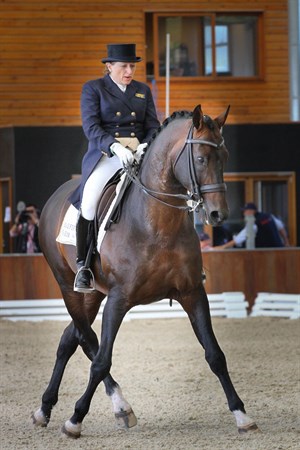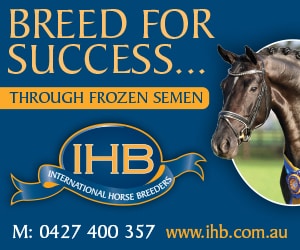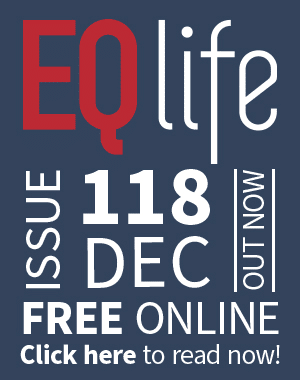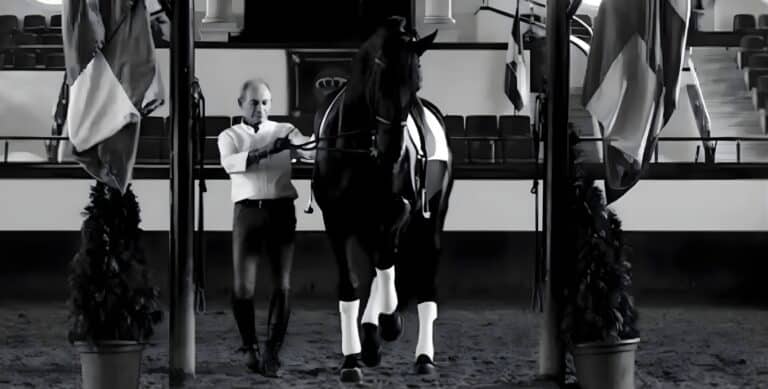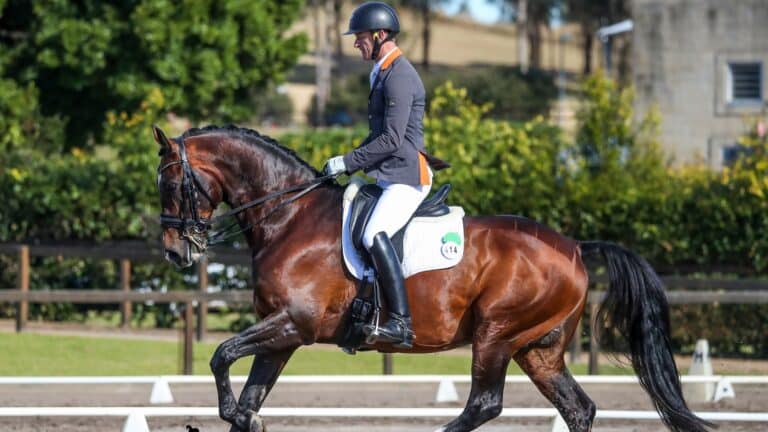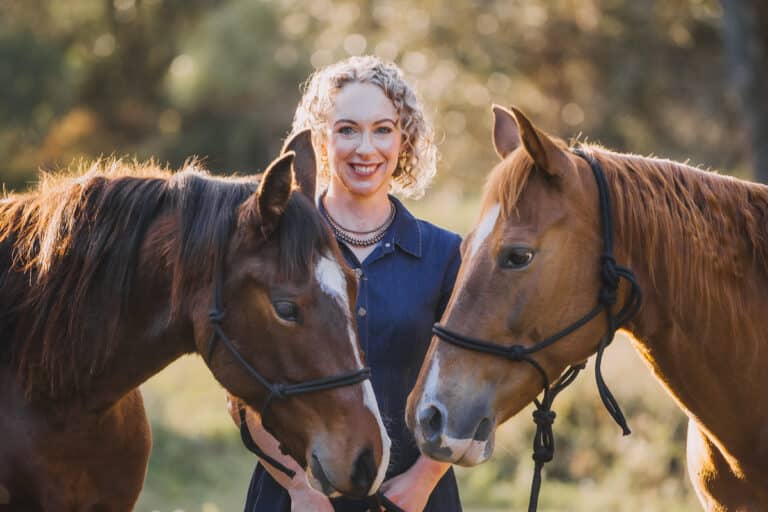This article has appeared previously with Equestrian Life. To see what is in our latest digital issue, please click here.
Kerry Mack and Mayfield Pzazz.
© Michelle Terlato
By Kerry Mack
One of the fundamental principles I follow in training is to MAKE THE RIGHT THING EASY AND THE WRONG THING DIFFICULT.
American trainer Ray Hunt is famous for this adage. You can read about it in a previous blog but I would like to give another example of how to use this idea TO IMPROVE STRAIGHTNESS AND TO TEACH LEG-YIELD. Straightness is important for dressage horses and jumping horses, because to be able to use the power of the hind legs the horse must be straight. Otherwise the energy goes out the side.
Today we were working with a 4 year old who, like most 4 year olds isn’t yet straight, and tends to bend the wrong way at times. Now the first thing to do to correct crookedness is to ride them forward. Many times if you ride actively forward they will become a lot straighter. When they have to push forward it is hard to be crooked and easy to be straight. In fact often crookedness is part of a horse’s resistance to going freely forward, and can also be a way to avoid carrying weight on the hind legs. However as well as straightening by going forward, it is also necessary to be able to straighten a horse by pushing them sideways. You MUST move the front legs to be straight in front of the hind legs to achieve straightness. You will not make him straight by trying to push the quarters across behind the shoulder. You can use the outside rein to move the shoulder a little to the inside. Try to SLOWLY and carefully ask for a little counter flexion with the outside rein, bend him to the outside. As you do this you will feel the shoulder move to the inside. If you ask too much or too quickly you may find that he bends to the outside at the poll rather than the base of the neck and this won’t correct a lack of straightness.
The leg-yield is one of the basic building blocks of dressage and training. The most basic responses are: reins mean stop (or slow down) two legs applied together means go, and one leg means move sideways away from the leg. The first lateral movement you train may be turn on the forehand, easily taught in hand. Under saddle you can do turn on the forehand too. Doing this from a standstill helps keep him calm and under control. Then comes leg-yield. This can be taught using the principle of “make the right thing easy”. We want the horse to willingly choose to do what we ask of him, so we must set it up wherever possible that he chooses the easy thing. So when you teach the leg-yield one way to do this is start by spiralling down to a very small circle. Don’t rush, but keep him actively going forward. Don’t let him slow down. Keep the rhythm as much as you can, keep the balance. Just slowly make the circle smaller and smaller. Make it small enough that it is difficult for the horse to stay going forward on the circle. For a young horse at trot this may be about 8 metres diameter. Just keep him in this small circle for long enough that you can feel him WANT to make the circle bigger. Then ALLOW him to make it bigger, by using your inside leg to push him out. You can take both hands to the outside to help show him the way. Don’t let him fall out by going too much sideways. Just allow him out so that it takes most of a circle to get back out to the 20 metre circle line again.
Using the small circle and keeping him on it in this way makes him want to do the right thing, and makes it easy for him. He is not likely to want to do anything else but make the circle bigger as the small circle is difficult and the large circle is easy. All you have to do is control the outside of him so he doesn’t just steer forwards into the big circle but steps sideways and across. It can help to think that you are using the outside rein to slow the shoulders down a bit while your inside leg speeds up the hindquarters, so they catch up with the shoulder as the circle gets bigger.
When you have trained this yield response to leg each way you can use it to help achieve straightness.
Have fun!
Kerry Mack
READ THE LATEST NEWS ARTICLES HERE

